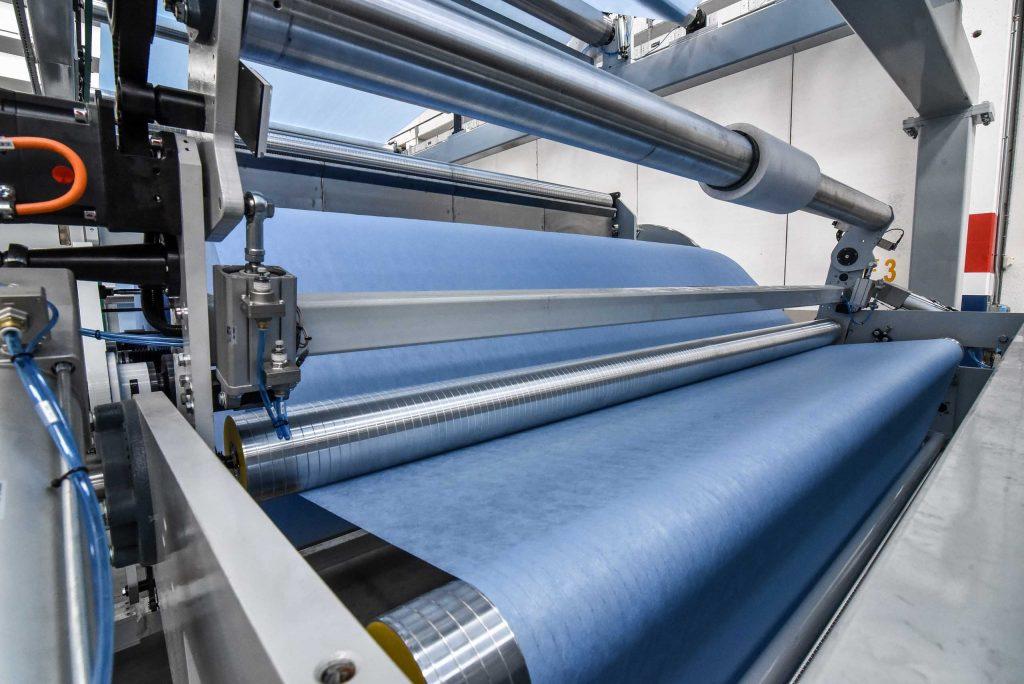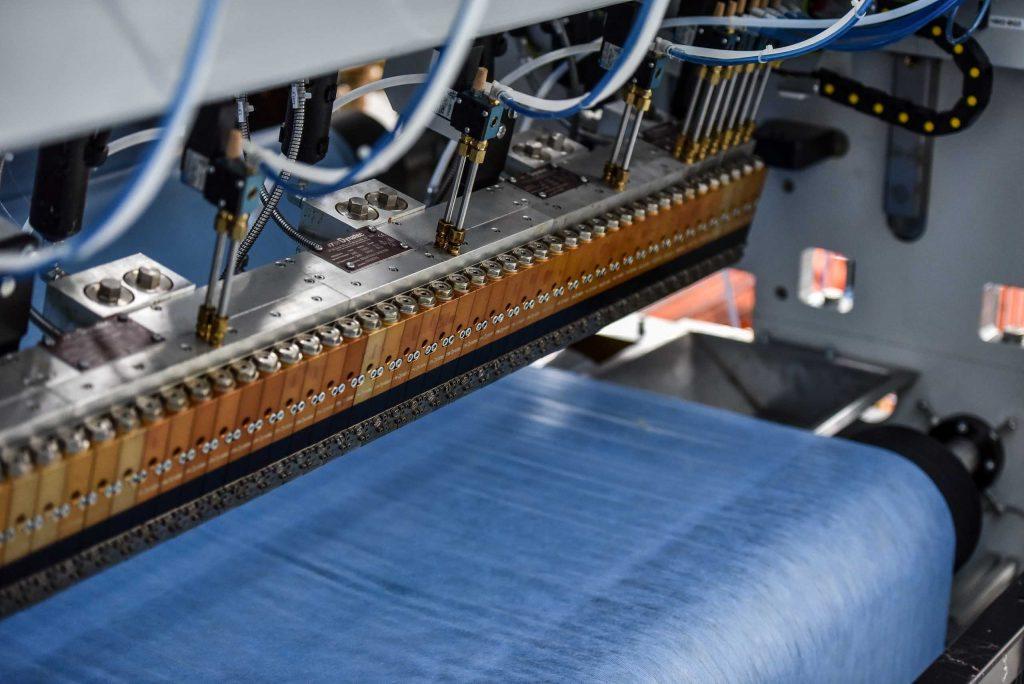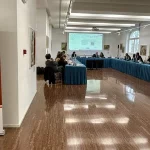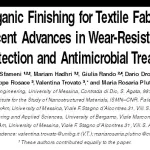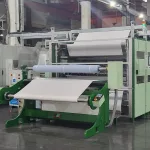Lamination is the process of manufacturing a material in multiple layers, so that the combined physical and mechanical characteristics of each layer make for a stronger, more resilient composite material.
The earliest examples of lamination made use of natural adhesives such as beeswax, gums, tar and substances derived from animal bones. As technology progressed, we discovered the use of sealing wax as the first hot-melt adhesive. In the 1930s a wet lamination process (with the use of solvents) was used to bond shirt collars (a woven fabric) with cellulose acetate. This process was deemed inconvenient, and by 1948 progress was made in dry lamination using polyvinyl acetate plasticized with dibutyl phthalate.
Nonwovens lamination, in particular, is the process of bonding two or more layers, at least one of which is a nonwoven fabric, with the objective of obtaining improved strength, stability, sound insulation, appearance, or other properties. Although less expensive to manufacture, nonwoven fabrics tend to be weaker than woven ones, and the lamination process comes into play just when there is the need to strengthen this nonwoven material for a variety of uses.
The bonding is typically done with the use of adhesives (or heat) and pressure, making it possible to manufacture nonwovens products, equipped with a waterproof layer, that are breathable, soft, comfortable and suitable for printing.
Shortly after the beginning of the industrial production of disposable diapers, nonwoven laminated products, such as the textile backsheet, appeared. From the early days of dry lamination various adhesives were produced, including hot-melt powders.
Breathability was an issue with lamination in the early days, but the processes used today are capable of producing breathable, porous materials that maintain their waterproof properties.
Nonwovens Lamination main areas of application
The use of nonwoven laminates has grown over the past few decades to include many industries, such as agricultural, clothing (interlinings, fillings, etc.), household, transportation and environmental. While there are many uses across various industries, the following make the most use of nonwoven laminates.
Medical Market
The medical industry is one of the most prominent users of nonwoven laminates. With the need to have sterile, disposable materials, there are a number of key uses for this material in medicine. Nonwovens lamination creates breathable materials that allow moisture to easily pass out of the garment, while preventing liquids from entering. The nonwoven composite material can also have an anti-microbial surface treatment to further enhances its protective properties. The outer layer of nonwoven fabric is soft to the touch, strong and durable.
Nonwovens lamination produces a variety of garments and items for protection in a medical environment, such as:
- Face masks
- Surgical gowns and drapes
- Hair and shoe covers
- Bandages and adhesive bandages
- Cleansing cloths
- Protective covers
Remember that all surgical gowns, masks, and protective coverings must be lightweight and fit snuggly, while allowing freedom of movement.
Hygiene Market
Hygiene is another industry that widely uses nonwoven laminated products. Again, the focus is on the availability of sterile, disposable products featuring air and water vapor permeability and water resistance like:
- Adult and Baby diapers
- Feminine hygiene products
- Patient bathing products
Filtration Market
Filtration is used in many industries, including beverage and automotive. The filtration of air and liquids requires filters made using nonwoven lamination with the capability of filtering various sizes of particles, depending on the type of filter and intended use.
A coffee filter, for example, only has to filter out the coffee grounds and allow the water to pass through. In contrast, an air filter must be capable of filtering out the tiniest particles of dust and other contaminants to ensure purification. Here are examples of filters made using nonwoven lamination:
- Coffee filters
- Water filters
- Vacuum cleaner filters
- Air filtration systems
- Oil filters
- Aquarium filters
- Furnace filters
Construction Market
The construction industry relies on materials made with nonwoven lamination primarily for insulation and waterproofing. The types of products used by the construction industry includes things like:
- Roof insulation material
- Roofing underlay
- VCI or metal protection wrap
- Stretch film
- Waterproof paperboard
Nonwovens Lamination techniques and advantages
The most suitable lamination method depends on the required properties of the final composite which, depending on the specific application, might need to be:
- Waterproof
- Impermeable to contaminants
- Breathable
- Lightweight
- Soft and comfortable
- Printable
As for the techniques that can be used in nonwoven lamination, these can be divided into four categories:
Adhesive Lamination
When it comes to adhesive nonwovens lamination, there are a number of different methods:
- Hot melt adhesives
- Dry bond laminating
- Cold glue
- Wet bond laminating
- Solventless laminating
Using hot melt adhesives is the leading method, replacing older ones like mechanical fastening, cold glue and wet lamination. This method uses microscopic dots to create bonds between the layers in order to form a composite. It offers several advantages, including the ability to:
- Bond two materials with very different properties
- Use a variety of adhesive application methods, including bead patterns, spirals, meltblown, sinusoidal and the point bonding technique, which minimizes points of contact and offers a more permeable composite with less use of adhesive
- Perform high-precision bonding
- Maintain the properties (breathability, flexibility, etc.) of the original material
- Manufacture products at high speed
Thermal lamination
Thermal lamination uses pressure and heat to adhere layers together, using a thermoplastic layer that can be a hot melt, fiber, film, or powder. There are a few different thermal bonding options that can be used, including the following:
- Area Bonding – produces stiff, thin, strong composites
- Point Bonding – produces composites that can range in their level of strength, elasticity, softness and flexibility
Ultrasonic Lamination
Ultrasonic lamination is the most environmentally friendly method, since no chemicals or adhesives are required. It relies on the use of high-frequency sound vibration to generate heat locally, which in turn causes thermoplastic fibers to melt and bond. Aside from the sustainability of the process, the advantages of ultrasonic lamination are many, including the ability to:
- Laminate as many as seven layers in a single pass
- Bond materials with different characteristics (physical strength, melting temperatures, etc.)
- Produce incredibly uniform composites in which the individual materials remain fully intact
- Use point bonding technique to minimize the bonded surface in permeable materials
- Ensure precision bonding to meet specific needs (such as pattern, location and frequency)
- Obtain a product that is more durable and will hold up to extreme heat better than those created through chemical bond
Extrusion Coating
Extrusion coating is a process in which a molten polymer is applied as a thin coating on one or both sides of one or more nonwoven layers.
This coating makes the nonwoven material waterproof, printable, antistatic and flame-resistant. In addition to this, the Extrusion Coating allows to contain the costs of raw materials and improve the structural stability of the material.
The Best Nonwovens Lamination machine
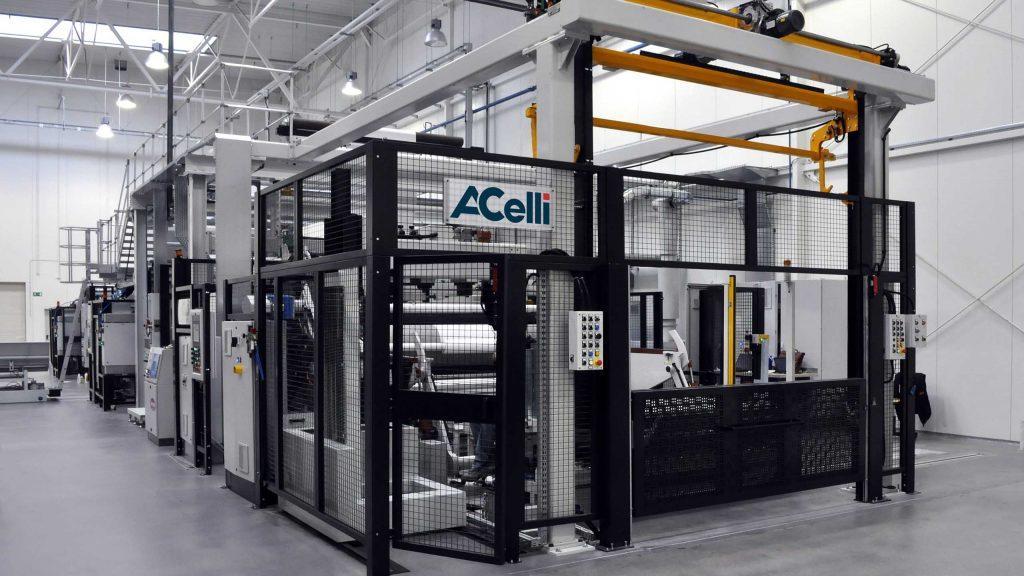 A.Celli F-LINE® Lamination Machine: the best solution for the Nonwovens Industry
A.Celli F-LINE® Lamination Machine: the best solution for the Nonwovens Industry
The characteristics that a good machine for nonwovens lamination must have are undoubtedly energy-efficiency, high production speed and great precision.
However, what truly sets the best machine apart is the dedicated quality and tension controls, two critical elements when it comes to the lamination of fragile material to ensure the high quality of the final product.
It is also important to remember that the nonwovens lamination machine is part of a larger system that includes machines dedicated to other tasks, and that it must work in sync with these other machines to ensure that the entire process from the beginning to the end of the system flows smoothly. This means that when the nonwoven materials are laminated, the final composite must transition to the next machine, whether that is packaging, material handling or converting lines, without losing the properties or characteristics of the original materials.
In addition, the machine should provide:
- Short changeover time
- Heavy-duty construction
- Several control zones and fast setup capabilities
- Winders and unwinders that include double stations in order to change rolls while the machine is operating
- A centralized control panel with data collection and business intelligence capabilities
- A pneumatic edge guiding system for unwinding and/or rewinding
The A.Celli F-Line® complete turnkey solution provides high-quality adhesive, thermal, and ultrasonic lamination, as well as unwind stands, laminating stations, and in-line slitting winders. This state-of-the-art machine is capable of laminating two or more layers with a maximum web width of 3,600 mm and with a max operating speed of 400/800 m/min. Moreover, among the optional components you can request you can find:
- web accumulation system
- trim & dust suction system
- DMS (Defect Management System)
- in-line printing unit
- master roll and finished reel handling system
Contact A.Celli for more information about our A.Celli F-LINE® Lamination Solution or to request a free consultation.
A.Celli Paper S.p.A. is specialized in technologically advanced system solutions for complete turnkey plants, in the manufacturing and rebuilding of Tissue Paper Machines and of rewinders for tissue, flat papers and cardboard.
A.Celli Nonwovens S.p.A. is specialized in winding, rewinding and packaging lines, palletizing and reel handling for nonwovens including multifunctional solutions in High Speed Lamination, Spooling and Printing Systems.
The A.Celli Group offers Digital Solutions to optimize production and maintenance processes, by developing advanced DCS controls, innovative industrial automation applications and integrated Automatic Warehouse Solutions, addressing prevalently to the market of machine manufacturers for the world of paper, tissue and nonwovens.

